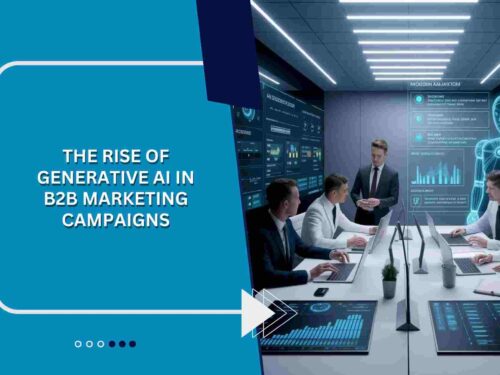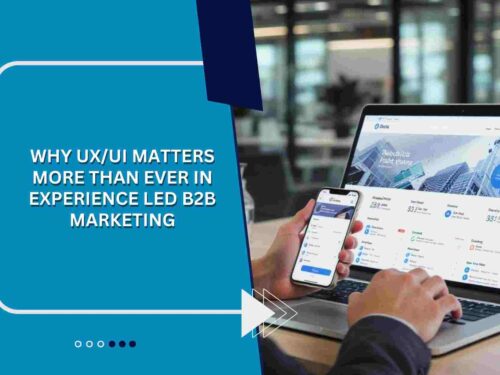The traditional B2B buyer journey has changed drastically. No longer confined to visible touchpoints like website visits, form fills, or email clicks, much of the modern purchase journey now unfolds in unseen digital corners. This unseen activity is what marketers today call the dark funnel a zone of anonymous, untrackable buyer behavior. As we enter 2025, understanding and mastering Dark Funnel Marketing has become essential for B2B marketers aiming to stay competitive and drive revenue growth.
The term “dark funnel” refers to all the activities, interactions, and decision-making steps that potential buyers take outside of trackable channels. This includes conversations in private Slack groups, direct messages on LinkedIn, word-of-mouth referrals, content consumption in closed communities, podcast listens, YouTube videos, and research done without ever clicking on your links. Dark Funnel Marketing is about finding ways to illuminate these activities and influence buyers before they ever reach your official sales funnel.
The Rise of Dark Funnel Marketing in a Post-Cookie Era
In 2025, the decline of third-party cookies and increasing data privacy regulations have accelerated the importance of Dark Funnel Marketing. With tools like Google phasing out third-party tracking and consumers becoming more privacy-conscious, marketers are losing visibility into the earliest stages of the buyer journey. What used to be an easily trackable sequence of clicks, impressions, and form submissions has become fragmented and obscured.
As a result, traditional attribution models are breaking down. Marketers can no longer confidently say, “This ad led to that conversion.” The buyer journey is no longer linear or visible. B2B buyers now conduct independent research across various untrackable platforms before they even land on a brand’s radar. Dark Funnel Marketing responds to this challenge by leveraging intent signals, first-party data, and behavioral insights to understand and engage these invisible buyers.
The Invisible Buyer Journey and Its Impact on B2B Sales
The average B2B buyer in 2025 completes more than 70% of their purchase decision before talking to a sales rep. Most of that journey happens in the dark funnel reading third-party blogs, consuming analyst reports, asking peers for recommendations, or listening to industry podcasts. These buyers don’t download eBooks or attend webinars right away. They quietly gather insights, compare vendors, and form opinions long before you’re aware of their interest.
Dark Funnel Marketing enables organizations to adapt to this behavior by focusing on early-stage, intent-rich signals rather than waiting for buyers to fill out forms. It’s about meeting prospects where they are even if where they are isn’t visible through your CRM or web analytics.
This shift is especially critical for high-consideration purchases in industries like SaaS, enterprise IT, and professional services. In these sectors, buyer committees often involve multiple stakeholders who conduct extensive offline and anonymous research. If your marketing team isn’t investing in Dark Funnel Marketing, you’re likely missing out on these key moments of influence.
The Role of First-Party Data and Intent Platforms in 2025
To succeed in Dark Funnel Marketing, first-party data has become the new gold standard. Brands are now collecting rich, permission-based insights from their own channels website behavior, email engagement, content interactions, product usage patterns, and more. These insights are then combined with predictive intelligence platforms that analyze broader digital behaviors across the web.
Platforms like 6sense, Bombora, and Demand base have emerged as leaders in identifying buying intent through behavioral signals. They help marketers detect when accounts are actively researching specific topics even if those activities happen outside your owned ecosystem. In 2025, these tools play a central role in Dark Funnel Marketing strategies by translating untrackable behaviors into actionable sales intelligence.
By scoring intent signals, marketers can prioritize leads based on likelihood to convert even before a prospect engages directly. Sales teams can then personalize outreach, tailoring their messaging to the pain points or topics that buyers are actively researching in the dark funnel.
Content Syndication and Its Strategic Value in the Dark Funnel
Content syndication has experienced a resurgence as a top strategy for Dark Funnel Marketing. Unlike owned content that relies on SEO and inbound discovery, syndication pushes your messaging out across third-party networks where prospects are already consuming content. In the context of the dark funnel, this approach helps brands insert themselves into early buyer research without requiring direct engagement.
By placing educational, non-promotional content on industry blogs, media websites, and newsletters, marketers can build trust and brand awareness with buyers long before they show up in analytics tools. Advanced syndication platforms now offer AI-powered targeting that ensures content reaches the right personas at the right stage of the decision-making process, even within anonymous journeys.
In 2025, effective Dark Funnel Marketing combines content syndication with lead scoring and engagement tracking to identify subtle signals that indicate interest. This includes time-on-page, scroll depth, topic frequency, and asset downloads from third-party portals insights that can help guide personalized follow-up strategies.
Influencer Marketing and Community Engagement in the Dark Funnel
Much of the dark funnel is shaped by peer influence and community-driven content. Buyers trust recommendations from industry peers far more than they trust brand communications. This has made influencer marketing and online community engagement critical elements of Dark Funnel Marketing.
In 2025, forward-thinking B2B brands are investing in building relationships with micro-influencers, niche thought leaders, and community moderators who already have the trust of your target audience. These influencers often participate in Slack groups, private LinkedIn communities, Reddit forums, and invite-only webinars spaces where your prospects are silently researching vendors.
Rather than pushing branded messages, the goal is to seed value through conversations. This could be in the form of guest podcasts, Q&A participation, social listening, or educational contributions that build brand equity organically. Dark Funnel Marketing thrives on credibility, not conversion pressure.
Leveraging AI to Decode the Dark Funnel
AI is transforming how marketers uncover insights from the dark funnel. By analyzing massive datasets, natural language processing, and user behavior modeling, AI tools can detect patterns that signal buyer intent. This might include identifying recurring topics across a buying team’s digital footprint or flagging high-interest keywords from company-wide research activities.
In 2025, many Dark Funnel Marketing platforms use AI-driven account-based marketing (ABM) orchestration. These tools automatically prioritize target accounts, generate personalized content, and deliver ads to accounts exhibiting off-site intent signals. The result is a predictive, scalable approach that helps teams engage invisible buyers with the right message at the right time.
AI also powers content optimization for dark funnel discovery. Algorithms analyze which formats, topics, and channels are resonating in invisible buyer journeys, guiding marketing teams to create assets that better align with current research behaviors.
Reimagining Attribution Models for the Dark Funnel
Traditional attribution models first-touch, last-touch, or linear fail to capture the nonlinear, anonymous paths of dark funnel interactions. In response, marketers in 2025 are adopting multi-signal attribution that assigns weight not just to clicks and conversions but to off-site signals, engagement velocity, and peer recommendations.
This involves blending quantitative data (ad clicks, email opens, content downloads) with qualitative indicators (influencer mentions, community activity, intent data). The goal is to map a holistic view of the buyer journey even the parts that don’t leave a trace in your CRM.
Dark Funnel Marketing demands a mindset shift: instead of proving ROI by tracked steps, it emphasizes creating influence in untrackable moments. Attribution becomes a story of engagement momentum, where marketing creates consistent value until the buyer emerges from the dark with clear intent.
Sales and Marketing Alignment Around Invisible Demand
One of the biggest benefits of investing in Dark Funnel Marketing is stronger alignment between sales and marketing. In the past, marketing handed off leads based on form fills, which often didn’t reflect true buying readiness. Now, using intent signals and dark funnel insights, marketing can prioritize leads who are actually researching a solution, even if they haven’t opted in.
Sales teams in 2025 are trained to act on subtle cues: a spike in topic research, a recent influencer mention, or a surge in traffic from third-party syndication. These signals inform account-based outreach that feels timely, relevant, and consultative.
Marketing also supports sales with enablement tools designed for dark funnel scenarios like competitive battle cards, objection-handling content, and personalized video pitches. The goal is to strike when interest is high, even if engagement is still invisible.
Future-Proofing B2B Strategy With Dark Funnel Marketing
As we look toward the future, Dark Funnel Marketing isn’t just a trend it’s a survival strategy for navigating complex, decentralized buyer behavior. Marketers must embrace the fact that most of the decision-making happens outside of their control and visibility. The brands that thrive will be those that master intent detection, community engagement, content syndication, and AI-powered personalization to capture attention early and often.
The dark funnel may be invisible, but it’s far from inaccessible. With the right tools, strategies, and mindset, B2B marketers in 2025 can unlock the full potential of anonymous buyer journeys and drive revenue like never before.
Contact us to learn how Acceligize can help you navigate the complexities of Dark Funnel Marketing and drive predictable B2B pipeline growth.




